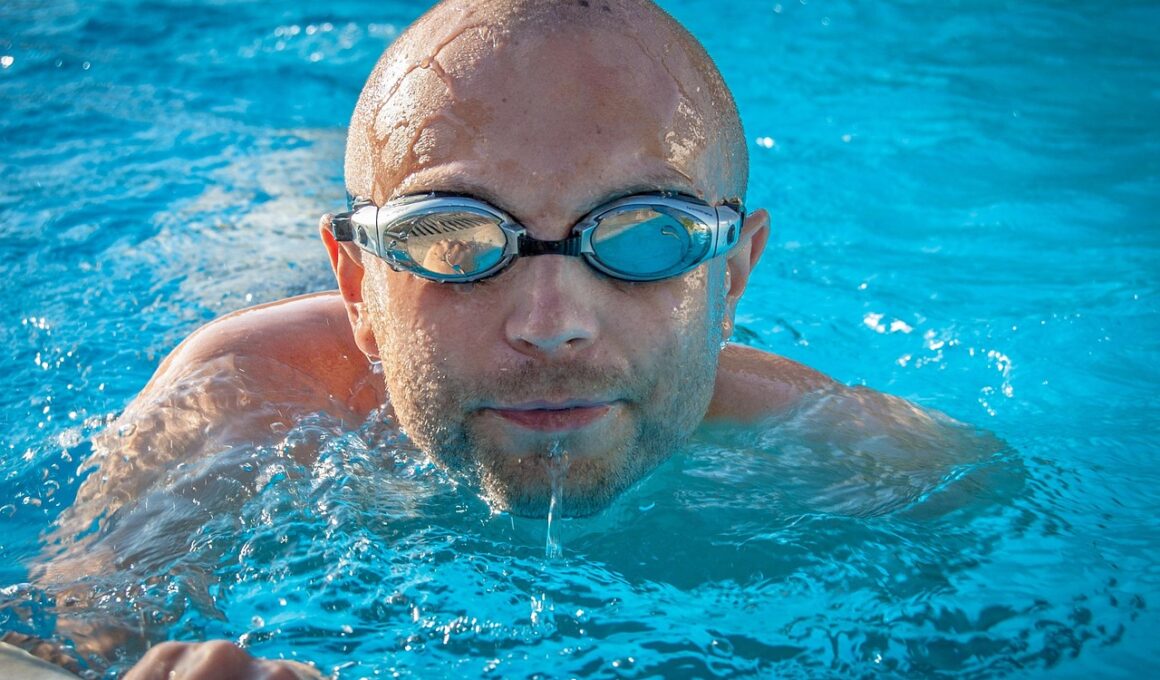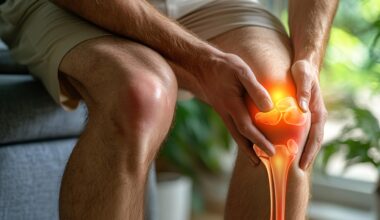Biomechanics of Swimming: Techniques to Optimize Stroke Efficiency
Swimming is not merely a physical activity; it involves complex biomechanics that can significantly influence stroke efficiency. To improve swimming performance, a keen understanding of body mechanics and stroke technique is essential. Coaches and athletes alike focus on optimizing movements to minimize drag and maximize propulsion in water. One crucial factor is the swimmer’s posture in the water. An optimal body position enhances streamlined flow, reducing water resistance. It is vital for swimmers to maintain a horizontal alignment when swimming. Moreover, effective breathing techniques also play a critical role in biomechanics. Swimmers need to turn their heads with minimal disruption to maintain speed. Kicking provides propulsion but should be energy-efficient to avoid fatigue. Lastly, hand entry into the water must be deliberate to create effective movement. Strength training of specific muscle groups can support stronger strokes, which leads to better performance. As biomechanics incorporates physics principles, analyzing data during practice sessions can help swimmers refine techniques, allowing for adjustments that improve overall efficiency in the water.
The Impact of Body Position on Stroke Efficiency
In swimming, body position directly affects stroke efficiency and propulsion. A horizontal position in the water minimizes drag, allowing for smoother movement through the aquatic environment. Swimmers should aim for a flat body alignment, ensuring the hips are not sinking. Keeping the head in line with the spine prevents increased resistance, which can significantly hamper speed. The role of buoyancy is paramount in determining how a swimmer navigates through water. Correctly utilizing buoyancy allows for energy conservation while swimming long distances. Furthermore, the angle of entry and arm stroke plays a critical role in effective propulsion. Swimmers should strive for a high elbow during the catch phase to maximize water engagement. An efficient arm recovery that minimizes resistance allows for quicker transitions between strokes. Drill sessions focusing on body position can yield substantial improvements in stroke efficiency. Coaches can implement various techniques to enhance awareness of body alignment and positioning. Regular feedback using swim analysis tools aids swimmers in adjusting and refining their technique for improved outcomes in competitive environments.
Another critical aspect of swimming mechanics is the art of timing during strokes and turns. Every stroke requires synchronization between the arms, legs, and breathing to maintain momentum. A well-timed kick enhances propulsion while the arms are performing the pulling phase of the stroke. The coordination between these elements can significantly influence stroke length and frequency. Swimmers must practice specific drills that focus on timing to develop a natural rhythm. Additionally, turns in competitive swimming are pivotal moments that can affect race outcomes. Efficient flip turns and open turns require precision and speed. Swimmers who master their turning techniques save valuable seconds in a race. Moreover, incorporating underwater kicks during the push-off phase can provide competitive advantages. This means utilizing streamlined positions immediately after the turn to overcome initial drag. By focusing on optimizing turn techniques, swimmers can enhance overall stroke efficiency, benefiting race performance. Implementing practice routines addressing turns and timing can help swimmers excel. Furthermore, exploring different techniques with a coach can create strategies tailored for individual strengths.
Enhancing Power through Strength Training
Strength training is paramount for swimmers looking to boost their overall power and stroke efficiency. A strong muscular foundation, particularly in the core, shoulders, and legs, can lead to enhanced propulsion and stability in the water. Structured strength conditioning routines contribute to muscle endurance, allowing swimmers to maintain speed over longer distances. Swimmers should incorporate weight training to engage major muscle groups essential for effective strokes. Exercises such as bench presses, squats, and deadlifts target the necessary muscles used in swimming. Additionally, resistance training with bands can mimic swimming movements, promoting muscle memory and coordination. It’s also crucial for swimmers to maintain flexibility through stretching routines, as this helps prevent injuries. To maximize performance gains, swimmers must balance strength training with swimming practice. Incorporating plyometrics can help develop explosiveness, further translating improvements in the water. Coaches can tailor strength conditioning based on individual needs, ensuring focused development of necessary attributes. A well-structured training plan that emphasizes strength can significantly elevate a swimmer’s performance during competitions and practice.
Another crucial area in optimizing stroke efficiency lies in the analysis of individual swimming technique. Video analysis technology has revolutionized the way athletes refine their strokes. By capturing swimmers in action, coaches can identify areas for improvement with great precision. Marking down specific metrics such as stroke rate, distance per stroke, and the effectiveness of kick patterns equips athletes with detailed insights. Furthermore, biomechanics software can simulate movement, allowing for real-time corrections. Utilizing feedback helps swimmers make immediate changes to their style. Underwater cameras provide perspectives of body alignment and stroke mechanics that are often overlooked from dry land. Additionally, swim meets can also present valuable performance data that coaches and athletes can evaluate after races. Analyzing performance not only creates improvement opportunities but also fosters confidence. Over time, mastering biomechanics through consistent analysis leads to significant advancements in effectiveness. Training sessions focused on repetitive analysis and examination facilitate ongoing improvement. As technology continues to evolve, swimmers who embrace advanced analytics can outpace competitors who neglect biomechanical evaluations.
Nutrition’s Role in Efficient Swimming
Nutrition significantly influences the performance of swimmers, impacting energy levels and recovery times. A balanced diet rich in carbohydrates fuels intense training sessions, providing essential energy required for strokes. Lean proteins are crucial for muscle repair post-training. Micronutrients play a supportive role by enhancing metabolic functions during sustained efforts in the water. Swimmers must develop personalized meal plans that align with their training schedules. Hydration also deserves crucial attention, as dehydration can impede performance and recovery. Swimmers need to assess their needs according to the training intensity and duration. Additionally, understanding the timing of nutrient intake optimizes energy availability. Pre-training snacks, quick and easily digestible carbohydrates, can provide immediate energy boosts. Post-training meals should focus on replenishing glycogen stores and repairing muscles. Moreover, essential fatty acids contribute to joint health and overall well-being, critical for proper form in strokes. Fast recovery can significantly impact subsequent training and performance levels. By focusing on maintaining a well-balanced nutrition strategy, swimmers set a foundation for peak efficiency in their strokes and overall performance in competitive environments.
A comprehensive approach to biomechanics in swimming encompasses various strategies designed to enhance athlete performance. From body positioning and strength training to nutrition and technique analysis, every component plays a vital role. Athletes must remain committed to exploring new methods to perfect their strokes. Engaging with professional coaches, utilizing technology, and seeking performance feedback fosters continuous improvement. It’s essential for swimmers to understand that small adjustments in technique can yield substantial results over time. Swimming is as much a mental sport as it is physical; a positive mindset can drive excellent outcomes in training and competition. Close collaboration among coaches, nutritionists, and sports scientists creates a well-rounded training environment. Developing a holistic approach ensures that swimmers receive comprehensive support tailored to their specific needs. Continuous monitoring of performance allows for data-driven adjustments that can enhance biomechanical efficiency. As the sport of swimming evolves, so too must the strategies for optimizing stroke efficiency. With proper application of biomechanical principles, athletes can harness their full potential in the water and achieve remarkable success in competitions.


